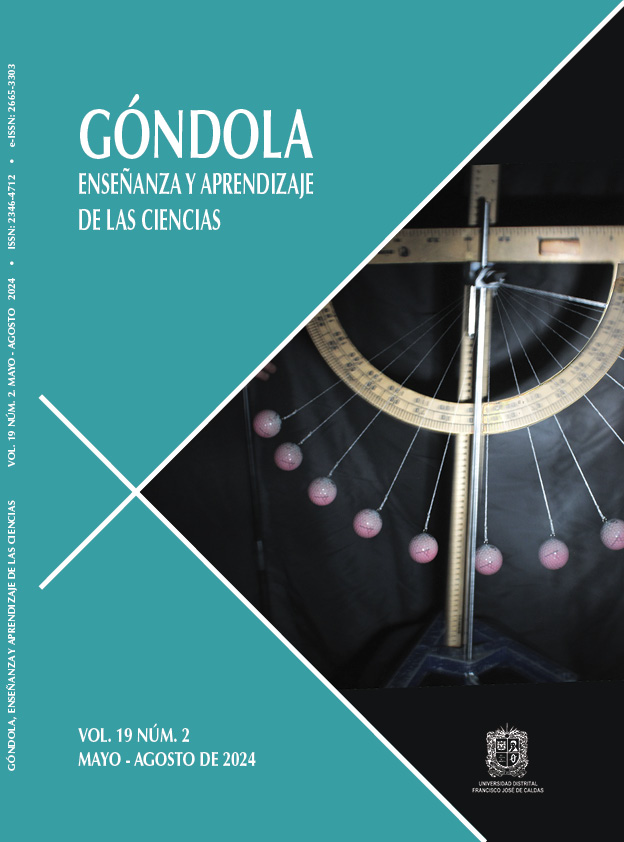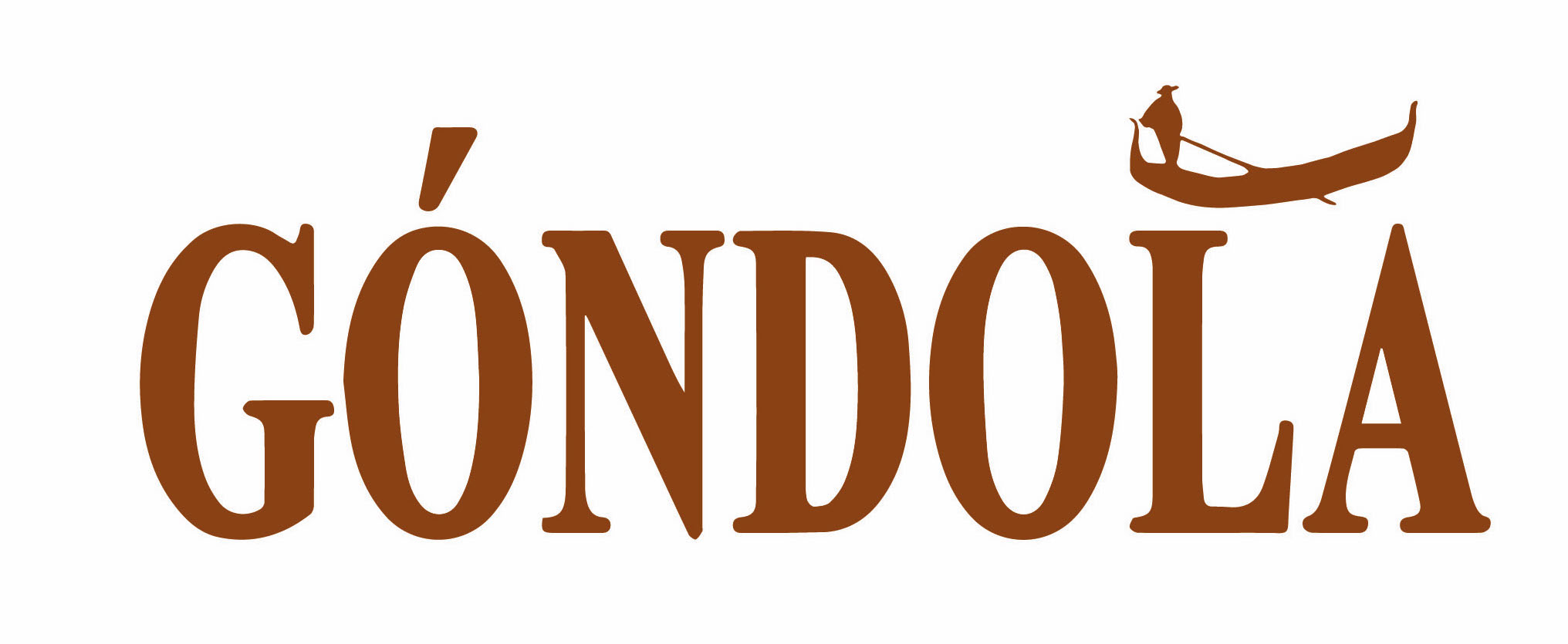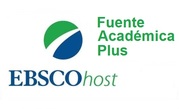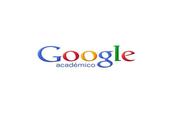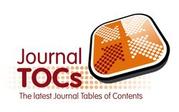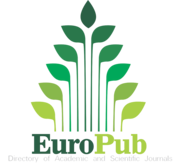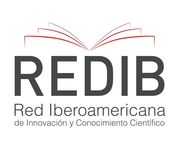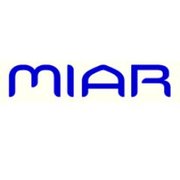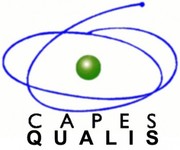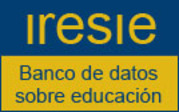DOI:
https://doi.org/10.14483/23464712.20283Publicado:
2024-06-13An Optical Illusion of Volume Promoted by the Transformation of a Paper Model from a Square Prism to a Tetrahedron
Una ilusión óptica de volumen promovida por la transformación de un modelo de papel de un prisma cuadrado a un tetraedro
Uma ilusão óptica de volume promovida pela transformaçao de um modelo de papel de um prisma quadrado para um tetraedro
Palabras clave:
Meaningful learning, Space geometry, School activities, Teaching model (en).Palabras clave:
Aprendizaje significativo, Geometría del espacio, Actividad escolar, Modelo didáctico (es).Palabras clave:
Aprendizagem significativo, Geometria sólida, Atividades escolares, Modelo de ensino (pt).Descargas
Resumen (en)
During the recycling of a cardboard box in the shape of a right prism with a square base to build a tetrahedron, there was the curious coincidence that the height of the first was equal to the inclined height of the second. After some bending and cutting on the prism, its dynamic conversion to the tetrahedron and vice versa was achieved. This fact motivated us to carry out a study on the meaningful learning of a small group of participants (N = 10) with minimum primary school education, regarding the volume of these two common geometric bodies. It was found that 70 % of the study population thought that the volumes were equal and that 100 % had forgotten the formula to calculate the volume of the tetrahedron. A template to build the model and a video to illustrate the mentioned transformation process are also presented.
Resumen (es)
Durante el reciclaje de una caja de cartón con forma de prisma recto de base cuadrada para construir un tetraedro, se presentó la curiosa coincidencia de que la altura del primero era igual a la altura inclinada del segundo. Luego de algunos dobleces y cortes sobre el prisma, se logró su conversión dinámica al tetraedro, y viceversa. Este hecho motivó la realización de un estudio sobre el aprendizaje significativo, de un pequeño grupo de participantes (N = 10) con escolaridad mínima de primaria, respecto al volumen de estos dos cuerpos geométricos comunes. Se encontró que el 70 % de la población de estudio pensó que los volúmenes eran iguales, y que el 100 % había olvidado la fórmula para calcular el volumen del tetraedro. Además, se presenta una plantilla para construir el modelo y un video para ilustrar el proceso de transformación mencionado.
Resumen (pt)
Durante a reciclagem de uma caixa de papelão em forma de prisma reto com base quadrada para construir um tetraedro, ocorreu a curiosa coincidência de que a altura da primeira era igual à altura inclinada da segunda. Depois de algumas dobras e cortes no prisma, conseguiu-se sua conversão dinâmica para o tetraedro e vice-versa. Este facto motivou-nos a realizar um estudo sobre a aprendizagem significativo de um pequeno grupo de participantes (N = 10) com escolaridade mínima do ensino básico, relativamente ao volume destes dois corpos geométricos comuns. Constatou-se que 70 % da população do estudo achava que os volumes eram iguais e que 100 % haviam esquecido a fórmula para calcular o volume do tetraedro. Além disso, é apresentado um template para construir o modelo e um vídeo para ilustrar o processo de transformação mencionado.
Referencias
Arroyo-Carmona, R. E., Fuentes López, H., Méndez- Rojas, M. A. & Pérez-Benítez, A. (2019). La geometría: ¡Un pie que cojea en la enseñanza de la estereoquímica! Educación Química, 16(4), 184-190. https://doi.org/10.22201/fq.18708404e.2005.4e.66082
Beneke, S. (2016). Teaching preschoolers about solid volume. Early Childhood Higher Education Resources Online. https://www.eclearningil.org/sites/default/files/hero-resources/microteach_solid-volume_5-23-16.pdf
Booker, G., Bond, D. & Sparrow, L. (2014). Teaching primary mathematics. Pearson.
Casio Computer Co. Ltd. (2022). Keisan online calculator. https://keisan.casio.com/exec/system/1223345456
Chamberlin, M. T. & Candelaria, M. S. (2018). Learning from teaching teachers: A lesson experiment in area and volume with prospective teachers. Mathematics Teacher Education and Development, 20(1), 86-111.
Durbin, D.-A. & Rourke, M. (2022, June 8). No, you’re not imagining it — package sizes are shrinking. The Associated Press. https://apnews.com/article/india-prices-business-d2c8279d39e1304f5623b3a99b56b8cc
Ellenberg, J. (2021). Shape: The hidden geometry of information, biology, strategy, democracy, and everything else. Penguin Press.
Freitag, M. A. & Crawford, L. B. (2014). Exploration activities for mathematics for elementary school teachers: A process approach. Brooks/Cole Cengage Learning.
Fujita, T. & Jones, K. (2003). The place of experimental tasks in geometry teaching: Learning from the textbook designs of the early 20th century. Research in Mathematics Education, 5(1), 47-62. https://doi.org/10.1080/14794800008520114
Huang, H.-M. E. & Wu, H.-Y. (2019). Supporting children’s understanding of volume measurement and ability to solve volume problems: Teaching and learning. Eurasia Journal of Mathematics, Science and Technology Education, 15(12), em1789. https://doi.org/10.29333/ejmste/109531
Kumar, R. (2004). Definitions and formulae in mathematics. Laxmi.
Morrison, K. (2000). Geometry: In everyday life. Heinemann Educational Botswana.
Pérez-Benítez, A., Arroyo-Carmona R. E. & González- Vergara, E. (2009). A simple system (named polifacil) for building three-dimensional models of polyhedra starting from drinking straws and raffia. The Chemical Education Journal (CEJ), 12(1), Serial 22. http://www.edu.utsunomiya-u.ac.jp/chem/v12n1/Perez_Benitez8013/Perez8013.html
Perkins D. (2003). La bañera de arquímedes y otras historias del descubrimiento científico: el arte del pensamiento creativo. Paidós.
Pinilla, A., Díaz, A. & Castellanos, C. (2024). Instrumento para potenciar nociones intuitivas del cálculo de volúmenes desde la perspectiva de los indivisibles de Cavalieri. Góndola, Enseñanza y Aprendizaje de las Ciencias, 19(1), 88-102. https://doi.org/10.14483/23464712.20239
Pinto Leivas, J. C. (2023). Visualização de formas geométricas ornamentadas em árvores urbanas. Góndola, Enseñanza y Aprendizaje de las Ciencias. 18(1), 8-22. https://doi.org/10.14483/23464712.17817
Tisdale, J. (2023, Aug. 11). Shrinkflation involves getting less bang for your buck-What exactly is it? Distractify, Engrost, Inc. https://www.distractify.com/p/what-is-shrinkflation
Vert, J. (2022). The regular tetrahedron. MATHalino, Engineering Mathematics. https://mathalino.com/reviewer/solid-mensuration-solid-geometry/regular-tetrahedron
Cómo citar
APA
ACM
ACS
ABNT
Chicago
Harvard
IEEE
MLA
Turabian
Vancouver
Descargar cita
Licencia
Derechos de autor 2024 Autor y Góndola. Enseñanza y Aprendizaje de las Ciencias

Esta obra está bajo una licencia internacional Creative Commons Atribución-NoComercial-SinDerivadas 4.0.
Góndola, Ens Aprend Cienc. es una publicación de acceso abierto, sin cargos económicos para autores ni lectores. La publicación, consulta o descarga de los contenidos de la revista no genera costo alguno para los autores ni los lectores, toda vez que la Universidad Distrital Francisco José de Caldas asume los gastos relacionados con edición, gestión y publicación. Los pares evaluadores no reciben retribución económica alguna por su valiosa contribución. Se entiende el trabajo de todos los actores mencionados anteriormente como un aporte al fortalecimiento y crecimiento de la comunidad investigadora en el campo de la Enseñanza de las Ciencias.
A partir del 01 de diciembre de 2018 los contenidos de la revista se publican bajo los términos de la Licencia Creative Commons Atribución–No comercial–Compartir igual 4.0 Internacional (CC-BY-NC-SA 4.0), bajo la cual otros podrán distribuir, remezclar, retocar, y crear a partir de la obra de modo no comercial, siempre y cuando den crédito y licencien sus nuevas creaciones bajo las mismas condiciones.
Los titulares de los derechos de autor son los autores y la revista Góndola, Ens Aprend Cienc. Los titulares conservan todos los derechos sin restricciones, respetando los términos de la licencia en cuanto a la consulta, descarga y distribución del material.
Cuando la obra o alguno de sus elementos se halle en el dominio público según la ley vigente aplicable, esta situación no quedará afectada por la licencia.
Asimismo, incentivamos a los autores a depositar sus contribuciones en otros repositorios institucionales y temáticos, con la certeza de que la cultura y el conocimiento es un bien de todos y para todos.

